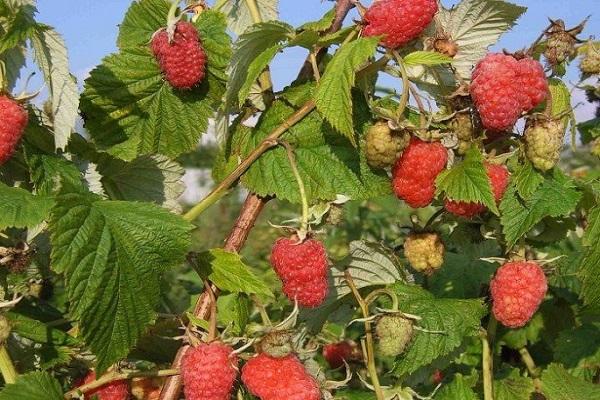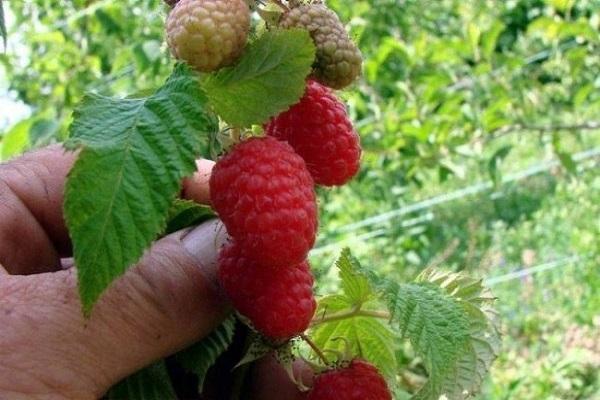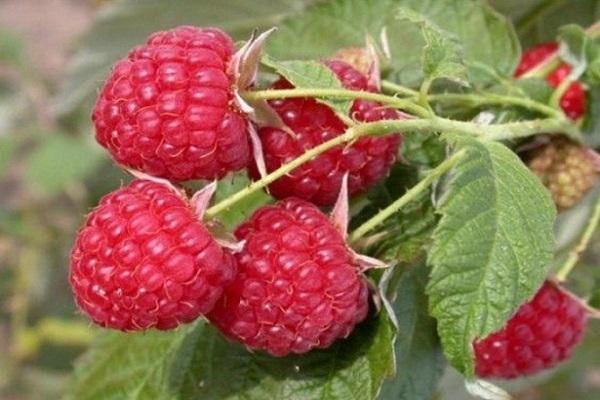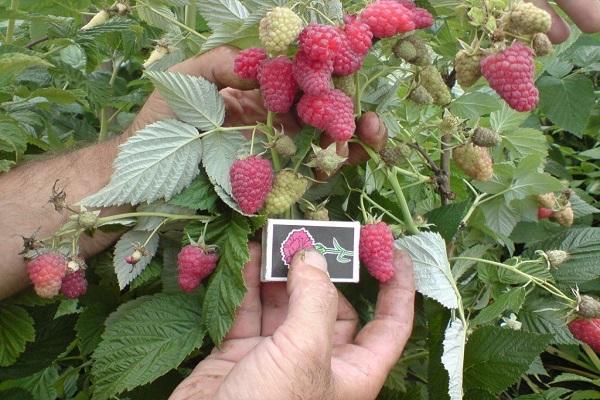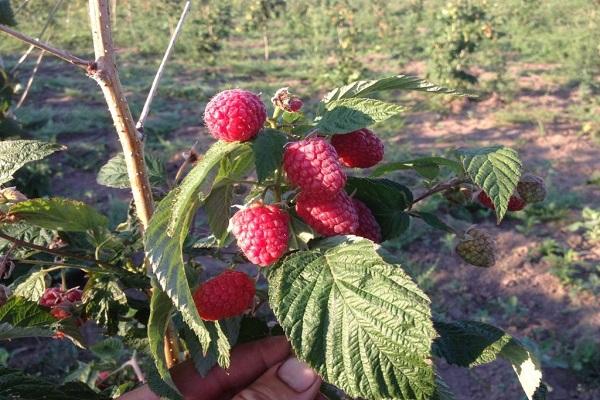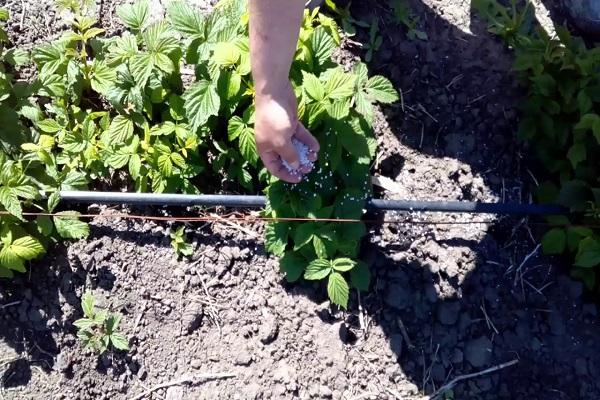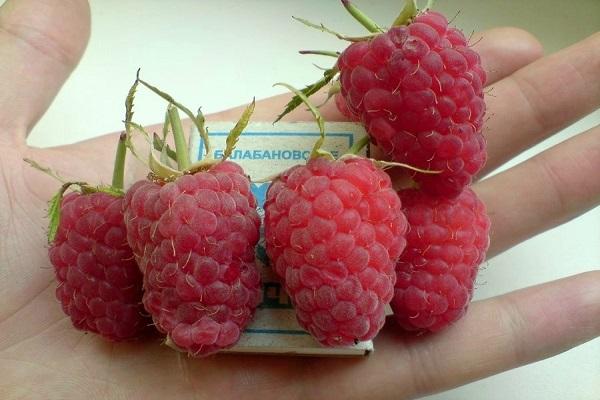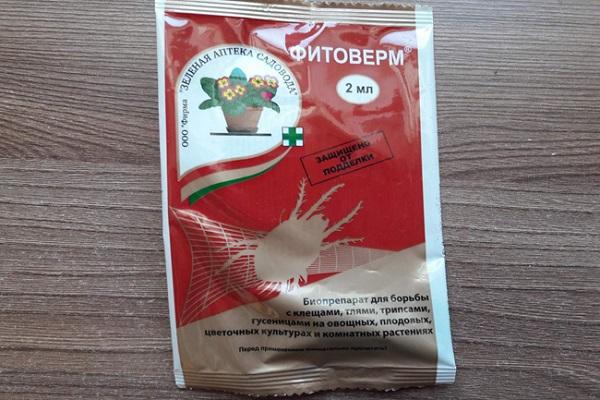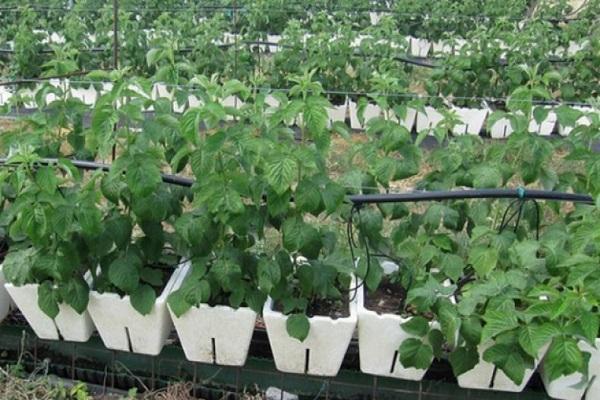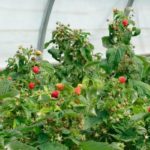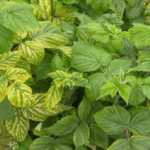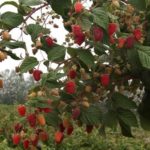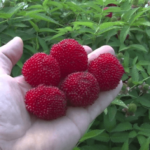When growing raspberries, gardeners need to choose a variety that is famous for its rich harvests. You need berries that are sweet, large, and aromatic. In addition, you want the bushes not to get sick and to tolerate temperature fluctuations well. It is worth paying attention to the description of the Patricia raspberry, which has many advantages.
- Brief description of Patricia raspberries
- Bushes
- Fruit
- Characteristics of the variety
- Ripening period and yield
- Disease resistance
- Winter hardiness
- Advantages and disadvantages
- Rules for growing raspberries
- Landing dates and location selection
- Planting scheme and technology
- Nuances of crop care
- Watering and mulching
- Feeding
- Trellis garter
- Trimming technology
- Shelter for the winter
- Methods of combating diseases and insects
- Breeding methods
- Collection and storage
Brief description of Patricia raspberries
The large-fruited Patricia raspberry, bred back in the 20th century, has no shortcomings. Therefore, many gardeners and farmers want to grow this variety in order to have tasty berries on the table for a long time. And in the market the fruits are in high demand among buyers.
Bushes
The perennial subshrub grows up to 1.8 meters tall. Its erect shoots form a spreading bush. The main roots of the plant lie at a depth of 30-40 centimeters. Buds are laid on horizontal root layers, from which up to 6-10 shoots are formed. These annual shoots are used to start a new Patricia raspberry plantation. A distinctive feature of the plant’s stems is a waxy coating on them and the absence of thorns.
The leaves on the branches are light green, slightly wrinkled, with a crenate edge. The color of young leaves is red-brown.
Fruit
Patricia raspberries are different:
- conical shape;
- weighing 7-10 grams;
- 4 centimeters long;
- rich dark red color;
- velvety surface.
The dessert taste of the fruit is noted. This is one of the sweet types of raspberries with a pleasant aroma.
Characteristics of the variety
The description of raspberries includes such a characteristic as the culture's resistance to weather disasters. When choosing a variety, it is necessary to take into account whether the plant is susceptible to disease or not, and whether the variety’s yield is high.
Ripening period and yield
The berries of Patricia raspberries ripen in the 2nd year after planting. The fruits ripen from the first week of June until August, although the variety is not remontant. It is noted that there are no breaks in fruiting.
During the season, you can collect either 5 kilograms of raspberries or 10-12, depending on the growing conditions and care.By the 10th year of the plantation’s life, the yield decreases, so it is necessary to renew it with young bushes.
Disease resistance
The culture has a strong gene for immunity to many diseases. You rarely see symptoms of anthracnose and botrytis on raspberries. Most often the hybrid suffers from late blight. But timely prevention also saves from this disease.
Among the pests found on bushes are spider mites and raspberry weevils.
Winter hardiness
The Patricia raspberry variety is cultivated not only in the southern regions. It grows successfully in gardens of the Moscow region and the Non-Black Earth Region. It can be grown in those areas of Siberia and the Far East where in winter the temperature does not drop below 30 degrees below zero.
Advantages and disadvantages
The Patricia raspberry variety has many advantages:
- The quality of fruits is valued in berry crops. Everyone likes large berries, juicy, sweet, with small drupes. The high yields of the hybrid also attract gardeners.
- The plant's unpretentiousness in care and frost resistance are one of the main advantages of the variety.
- Raspberries rarely get sick even in unfavorable weather conditions.
- The berries are easy to pick as there are no thorns on the stems.
- Raspberries bear fruit for a long time and easily tolerate drought.
One of the disadvantages of the hybrid is that the berries do not tolerate transportation well and can rot if stored for a long time. The bushes must be tied to a trellis. And young shoots that form in large numbers have to be constantly cut out.
Rules for growing raspberries
To start a Patricia raspberry plantation, it is worth considering the issue of choosing seedlings. They should be purchased only from trusted sellers. It is necessary to pay attention to the condition of the root system. It should be damp, without damage or rot. The length of the roots is 7-10 centimeters.
Landing dates and location selection
The optimal time for planting berry crops is early spring. It is better to choose days from late April to early May, when it will be cloudy. In autumn, you can start a plantation in areas where winter comes late. It is allowed to plant in summer using annual shoots that have leaves.
For Patricia raspberries, choose sunlit places with slight partial shade during the day. Areas of elevated terrain are suitable. Features of the soil for the plant:
- neutral in acidity;
- sandy loam or loamy chernozem;
- groundwater at a depth of 1.5 meters.
Before planting, you need to clear the area well of weeds, dig it up, apply fertilizers: superphosphate, potassium salt, half-rotted manure.
Planting scheme and technology
The bush planting method is suitable for this variety. After digging holes measuring 35 x 35 x 30 centimeters, placing them at a distance of 1 meter from each other, fertilizer is applied. After mixing a quarter bucket of humus, 5 grams of superphosphate, 3 grams of potassium salt with the soil, place the seedling in the middle and cover it with soil mixture. It is necessary to compact each layer of soil. At the end, water the raspberries with water, 5 liters per bush. Next, apply mulch from humus, sawdust or straw in a layer of 6-8 centimeters.
Nuances of crop care
The yield of the Patricia variety depends on proper care and growing conditions. The gardener selects competent agrotechnical measures so that the raspberries bear fruit on time.
Watering and mulching
Berry bushes suffer greatly from lack of moisture in the soil. There is a decrease in yields if the raspberry plantation is not watered enough in the heat. In steppe regions, it is necessary to irrigate berry plantings 3-4 times during the growing season.Be sure to water the bushes when the berries begin to set.
Mulching will help retain moisture in the soil. A layer of humus and straw is applied immediately after planting. In the fall, it is buried in the ground to fertilize the area.
Feeding
The bushes begin to be fed the next year after planting. Nitrogenous fertilizers are needed in early spring. Ammonium nitrate will be enough for 1 square meter in the amount of 15-20 grams. It is dissolved in 5 liters of water and watered over the plants.
As for organic fertilizers, it is worth using a solution of mullein 1:6 or chicken manure - 1:15. A substitute for fertilizing can be a mixture of 10 grams of ammonium nitrate, 15 grams of potassium salt, dissolved in a bucket of water. Wood ash is used as fertilizer.
Trellis garter
Tall shoots of Patricia raspberries need to be tied up. It is better to build a trellis along the rows of bushes. The wire is pulled in 2 rows, attached to strong stakes. The tension height is 70 centimeters and 125. The shoots must be tied in a fan pattern.
Trimming technology
At 3 years, raspberries reach peak fruiting. It is necessary to leave part of the annual shoots, 10-12 pieces, except fruit-bearing ones, and cut out the rest completely. The branches are broken off so that the distance between the remaining stems is not less than 15-20 centimeters.
Shelter for the winter
Those who grow Patricia raspberries and live in areas with frosty winters need to cover the bushes for the winter. To do this, cut off the shoots in October, feed and water the plants. Then a layer of spruce branches and plant waste is applied. Unpruned branches are bent to the ground, pinning the ends. You can cover the plantings with layers of non-woven material.
Methods of combating diseases and insects
In order for the plantation to develop successfully and bear fruit regularly, it is necessary to constantly inspect the plants for fungal infection or attack by harmful insects. You can prevent the appearance of undesirable signs of pathologies by treating raspberry bushes with Bordeaux mixture with a concentration of 1%.
When bud moths, raspberry weevils, and gall midges are found on the shoots, the diseased plants are sprayed with Karbofos. The drug “Fitoverm” will help against fungal infections.
Breeding methods
Raspberry Patricia is propagated:
- seeds;
- cuttings;
- root suckers;
- dividing the bush.
Vegetative methods are more acceptable for growing crops. When used, parental qualities are preserved. It is better to carry out propagation when transplanting bushes. Having separated some of the powerful shoots, they are placed in another place. The main thing here is to carefully monitor the development of the plant and help it adapt.
Collection and storage
As the fruits ripen, they are collected in baskets. It is better to pick berries in dry weather, as they will last longer. You should not put more than 2-3 kilograms in baskets. Harvested raspberries are used to prepare aromatic jam for the winter. In summer, desserts are prepared from fresh berries.
The variety is not suitable for drying and freezing. The fruits have a lot of moisture, so they can rot rather than dry out. And after defrosting they will turn into a thick mass.

